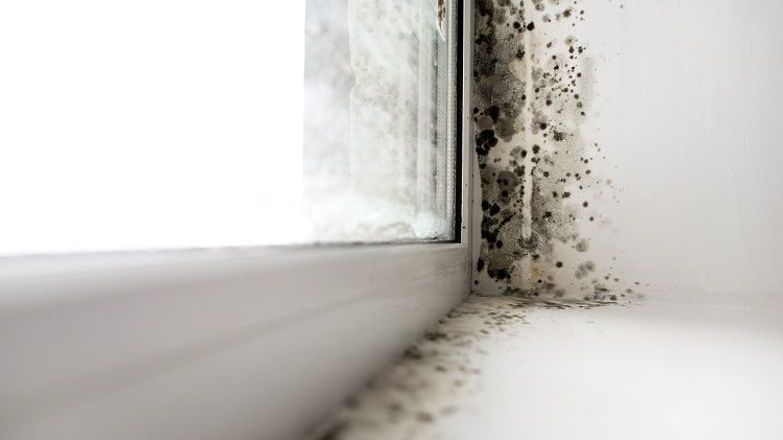
The core themes closely mirror the UK Government’s direction for the private rented sector through the proposed Decent Homes Standard, and for the planned generation of new towns and high-quality placemaking, creating a clear cross-tenure trajectory for the future of housebuilding.
By acting now to improve ventilation strategies, strengthen moisture management and design for comfort, landlords, developers and agents can stay ahead of regulatory change and deliver healthier homes for residents across all tenures.
See Homes England’s Healthy Homes guidance: Healthy Homes — a foundation for healthier and resilient communities - GOV.UK
Moisture management and drying space
One of the most notable updates is the introduction of a requirement for a dedicated, ventilated indoor drying space. This acknowledges a practical truth: many households cannot rely on outdoor drying or energy-intensive tumble dryers. By mandating suitable drying areas, the guidance helps reduce condensation, mould growth and the health risks associated with poor indoor air quality.
Crucially, this signals a wider cultural shift. In the PRS, moisture problems are increasingly viewed as an issue of design, ventilation performance and property maintenance, rather than a lifestyle issue. Awaab’s Law makes this explicit by requiring landlords to take responsibility for damp and mould risks linked to everyday activities such as cooking, bathing and drying laundry. That principle now sits at the heart of emerging expectations across all tenures.
For landlords, this means fewer long-term repairs, fewer complaints and improved predictability of maintenance costs, aligning better design with long-term asset management.
Comfort, control and the resident experience
The guidance goes beyond fabric performance to prioritise comfort and user control. It emphasises intuitive heating and ventilation controls, good natural light, reduced overheating risks, and better acoustic and thermal comfort.
This aligns with a wider sector shift: homes should not only be energy-efficient but simple and comfortable to operate. Poorly designed or confusing controls can undermine ventilation strategies, contribute to moisture build-up and reduce energy efficiency.
Healthy Homes addresses this by encouraging clear, accessible user interfaces so residents can actively manage their environment without specialist knowledge.
The Proposed Decent Homes Standard
The UK Government’s commitment to introducing a Decent Homes Standard in the private rented sector makes the Healthy Homes guidance particularly relevant to agents and landlords.
Many of the issues highlighted are expected to feature prominently in future PRS regulation. However, the direction is clear. Landlords will be expected to prevent damp and mould, not react after the fact. Early, thorough, and well-documented inspections must happen, and repairs must be timely and evidence-based to comply with Awwab’s Law and related reforms.
Awaab's Law: damp and mould in lettings
To bring property agents and landlords up to date on Awaab’s Law and to give you the confidence to determine the appropriate actions necessary to help rectify issues.
Seen together, Healthy Homes and the proposed PRS Decent Homes Standard represent a consistent move towards healthier, more efficient, and more resilient housing across all tenures.
Member feedback delivered on Decent Homes Standard
Propertymark has submitted a detailed response to the UK Government consultation based on roundtables and surveys with agents across England. Our engagement shows that most properties managed by our members are already largely compliant. However, the extension of the Decent Homes Standard (DHS) will bring new obligations, particularly around damp and mould, safety measures, and clearer repair thresholds. We support a data-driven, proactive approach to property management that considers tenant experience.
Practical steps to future-proof property management
Regardless of tenure, professionals involved in development, lettings or management can prepare by:
- Reviewing design and refurbishment plans for ventilation quality and drying space provision
- Assessing indoor drying risk in existing properties
- Updating repair, inspection and record-keeping processes to reflect new expectations
- Training teams on damp, mould, and resident engagement, particularly in anticipation of Awaab’s Law requirements
- Identifying opportunities to improve energy efficiency, especially in areas where moisture risk and thermal performance intersect
These steps not only improve compliance but also reduce operational risks and improve resident satisfaction.
The stopwatch issue - preparing for Awaab's Law in the PRS
From 27 October 2025, fixed, enforceable timeframes will be in place for social landlords in England to investigate, make safe and start prevention works to address hazards (including damp and mould), with powers to require alternative accommodation if a home can’t be made safe in time. Similar requirements are set to be extended to the private rented sector (PRS), so now is the time for agents to adopt best practice, future-proof their businesses, and protect tenants and properties.
Will Healthy Homes influence regulation?
Given the scale of Homes England-funded development (over 36,000 homes completed in 2024–25 alone), Healthy Homes is likely to become a de facto benchmark.
The New Towns Programme spans mixed tenures, meaning Healthy Homes is well placed to influence design well beyond the social and affordable housing sectors. As new settlements bring together affordable, market sale, and private rented homes, the standards applied to one part of the scheme inevitably set expectations across the rest.
Just as space standards and accessibility requirements first gained traction in the affordable sector before becoming the norm across new development, the Healthy Homes principles are likely to shape the baseline for new-town private housing, too.





